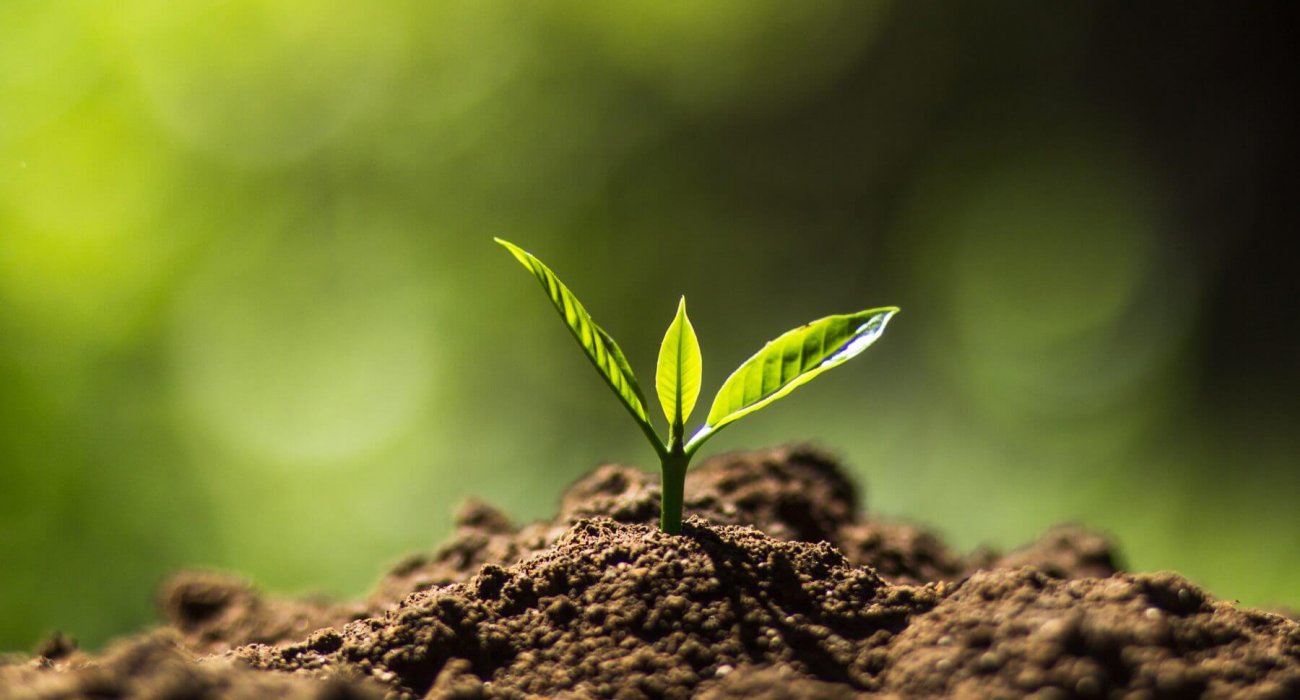Many people may take for granted that they can simply pick up a freshly made coffee from their local coffee shop and be on their way, nicely perked up by caffeine.
But if we delve deeper into the journey and science behind that coffee, we can see that it started out
Coffee harvesting
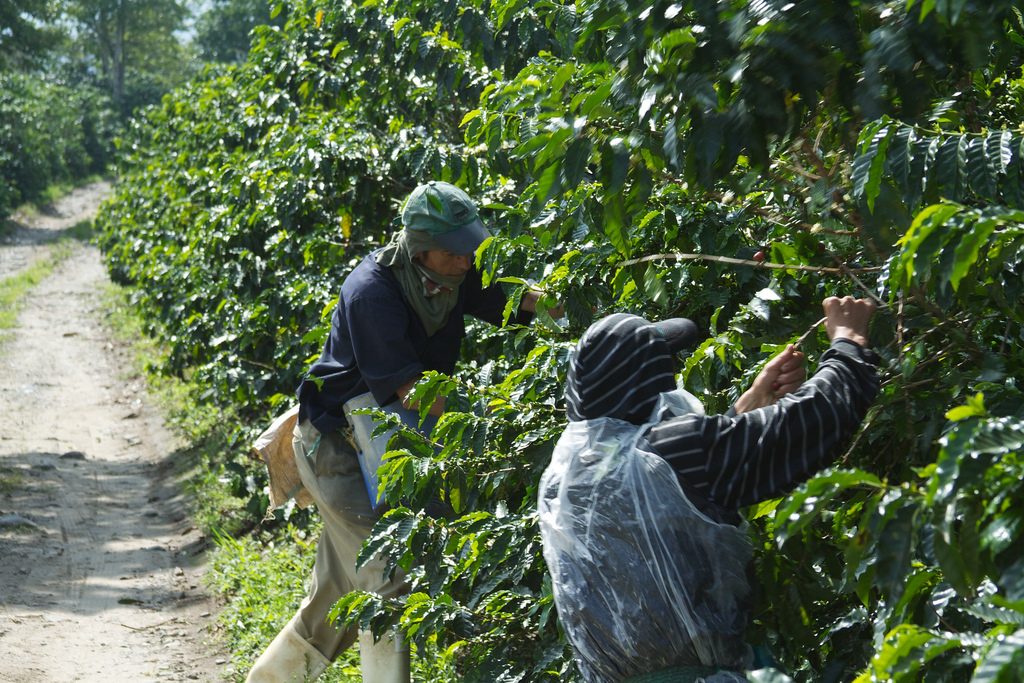
Primarily, there are two species of coffee trees, Coffea Arabica and Coffea Robusta (canephora). Both are evergreen shrubs grown along the ‘bean belt’ – between the Tropics of Cancer and Capricorn.
For Robusta cherries to ripen, temperatures of between 24°C and 30°C are required with 1500mm to 3000mm of annual rainfall. These Robusta trees are able to grow at lower altitudes, anywhere between sea-level and 800m above. Allowing the ripe cherries to be produced in around 11 months.
Whereas, Arabica cherries prefer a higher altitude and lower temperature of between 15°C and 24°C, also not requiring quite as much rainfall. These conditions produce ripe Arabica cherries in around 7 to 9 months.
The actual coffee harvesting process can be completed in a couple of different ways. There is the selective harvesting method, in which only the ripe cherries are hand-picked from the branches, leaving the un-ripe to mature further and be collected a period of time later. This is a more expensive and timely way of harvesting the coffee cherries, however, it also produces a higher quality product, therefore, a higher sell price for the producers.
Alternatively, there is the strip harvesting method. This involves the cherry pickers stripping all of the cherries from the branches, at a time when there should be around 80% of the harvest ripe. It is worth noting that this can be done by hand or mechanically, if the land allows for machinery to pass through. The downside of course is the product will more than likely be of lower quality due to the varying of maturation, hence, a lower sell price.
Coffee drying
Now the coffee cherries have been picked, they need to be dried to a moisture level of around 11%.
There are two ways of doing this – the dry method, or the wet method.
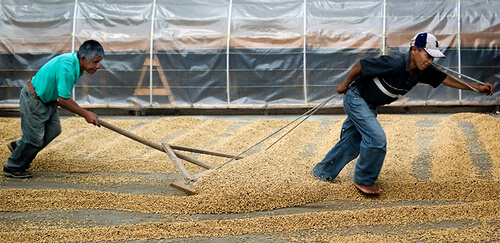
The dry method is a natural method wherein the cherries are laid out on patios or long trestle tables and sun-dried for approximately 4 weeks, systematically hand-turned or raked for even drying and prevention of fermentation. This process can be finished off by machine on larger plantation to speed up the process slightly.
The wet method involves the coffee cherries being squeezed by a machine to remove the flesh and skin from the beans, with a remaining outer skin called the mucilage. These beans are then added to tanks for the mucilage to be broken down by natural enzymes. This first part takes 24 – 36 hours. These coffee beans then need to be dried, much in the same way as the above whole cherries, just quicker, reaching around 11% moisture in 8 to 10 days.
Coffee hulling, grading and sorting
Milling of the coffee beans will either entail the whole dried cherry being removed by machinery, if the previous process used was the dry method. Or simply, the mucilage being removed from the ‘parchment coffee’ if the wet method was used.
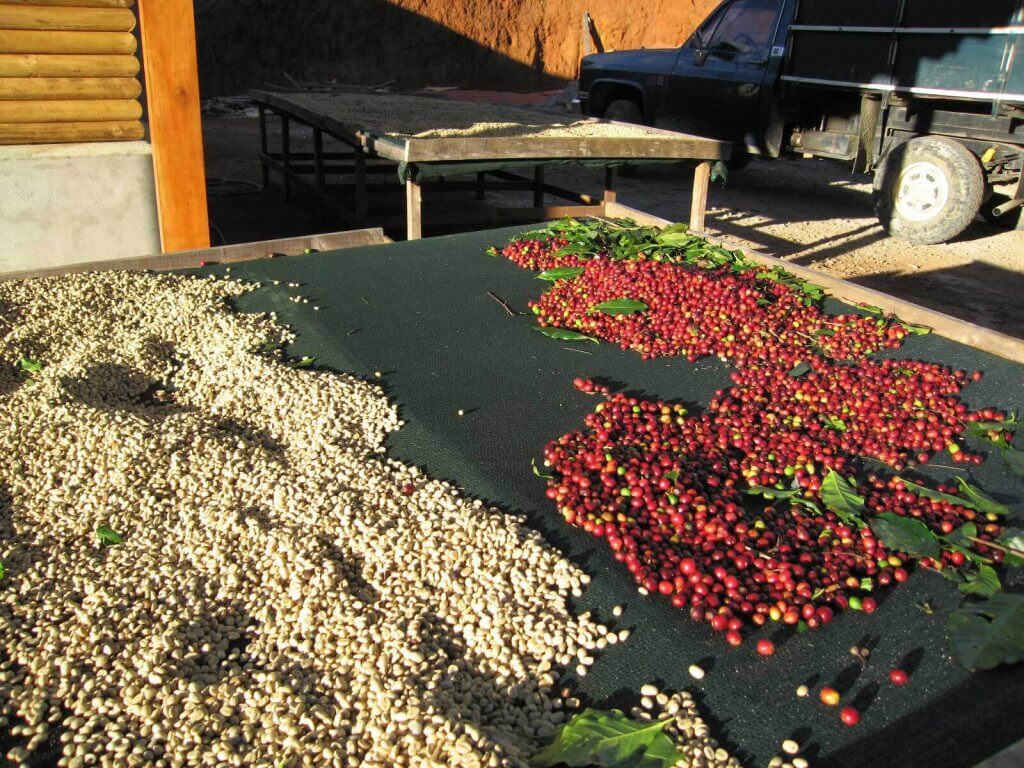
There is then an extra process of polishing, this is totally optional and involves removing any remaining silver skin from the coffee beans, typically producing a higher quality bean.
Once the beans are dried and hulled, they have to be sorted by grade, or size. This is done by screens with uniform holes drilled through them, each screen has a different size hole, ranging from number 8 to 20. The smaller beans will fall through at the lower numbers, with larger beans only falling through the higher numbers. Arabica beans are usually graded in even numbers and Robusta in odd numbers. Larger beans are typically the better-quality bean, however there are smaller beans that may have good characteristics.
At this point any defect or damaged beans will be removed and the sorted green beans exported to their destination.
Roasting
Once the green beans reach the intended destination at the roastery, they are subject to temperatures of 180°C to 240°C for anywhere between 90 seconds to 20 minutes. This is the process that determines the flavour profile of the resulting coffee.
A customer purchasing the roasted beans are able to request a specific taste and this should be able to be achieved by carefully altering the roasting conditions. As you can see, roasting coffee beans is a fine art.
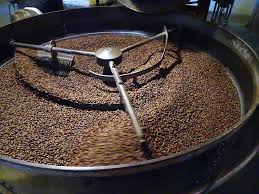
There are many different descriptions of the resulting roasted beans, but for the main part, they fall into either light, medium, medium-dark or dark. The lighter roasts tend to be milder in flavour while the darker roasts have a more pronounced bitter taste.
Time is now ticking for the beans to be used while they are still fresh as once the beans are roasted, they have a period of 1 or 2 days to settle and be ready for use, after that, oxidation begins. It is important for the coffee beans to be stored in
Great coffee beans…what about the water?
So once your coffee journey is complete, when it comes to getting the best out of your coffee, water makes a big difference.
Coffee beans are full of different chemicals that have to be extracted during the brewing process in order to create the flavour of the coffee. Water is the key to extracting the chemicals, flavours and aromas from the ground coffee. It does this by bonding with the compounds within the coffee.
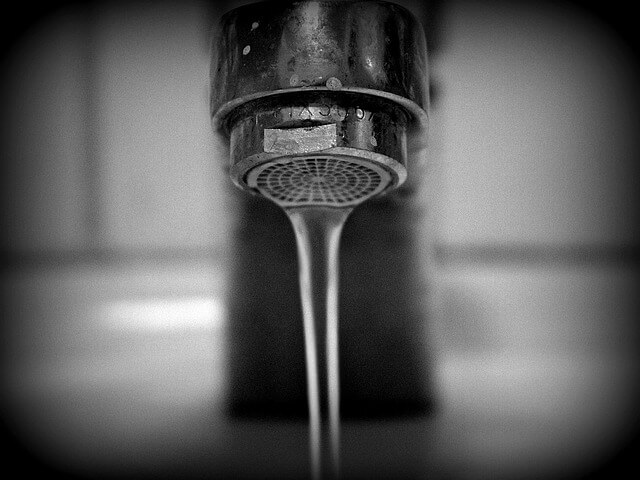
But we also don’t want the water to add any unwanted flavours to the coffee either. So the minerals in the water have to be just right. Filtering your water to remove any chlorine and impurities is a great place to start.
Hard water is good for brewing coffee due to the presence of magnesium and calcium, as they help with the extraction of the coffee by attracting the negatively charged compounds of coffee. Whereas softer water has a lot of sodium present, which will create quite a flat drink.
